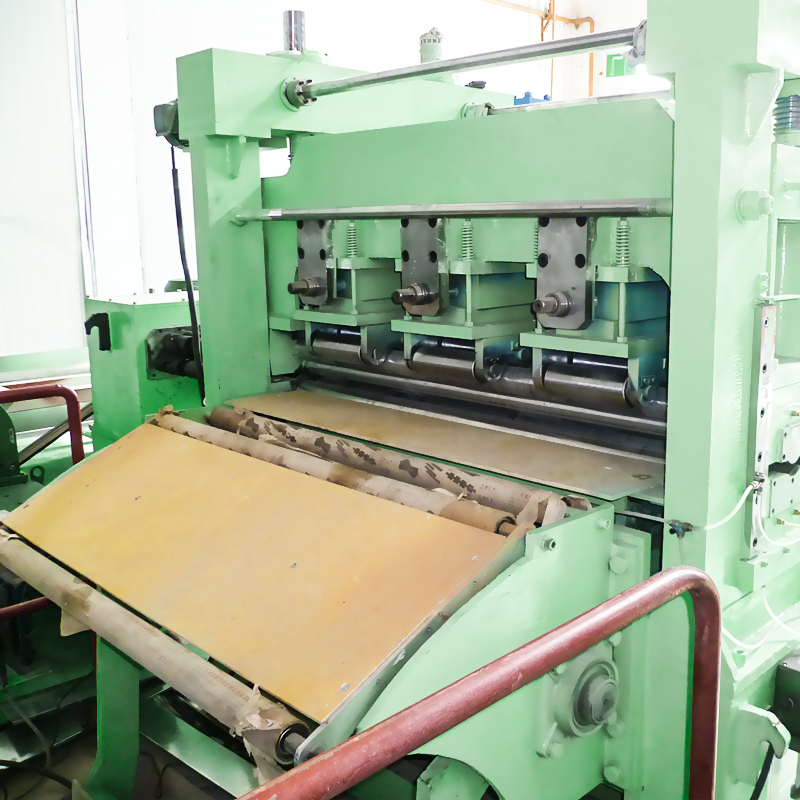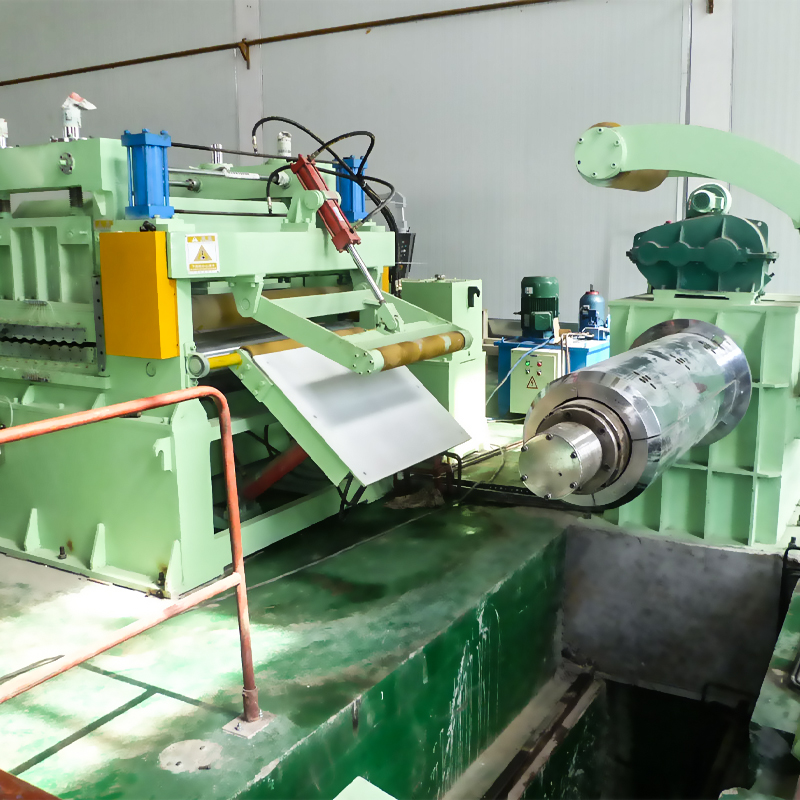Introduction
La tooling design in a roll forming machine is critical to producing high-quality metal profiles with precision and efficiency. Without proper tooling, manufacturers face issues like misalignment, excessive material waste, and inconsistent profile dimensions.
Alors, comment design efficient roll forming tooling qui garantit smooth production, minimal waste, and maximum accuracy?
Dans ce guide, nous aborderons les sujets suivants
✅ Key principles of roll forming tooling design
✅ Factors affecting tooling performance
✅ Best practices for optimizing tooling lifespan
✅ Common tooling design issues and solutions
✅ How to choose the right tooling materials
Explorons les engineering behind roll forming tooling design et comment maximize efficiency and precision in 2025!
Key Principles of Roll Forming Tooling Design
Roll forming tooling consists of rouleaux conçus avec précision that gradually shape metal sheets into profils complexes. Le processus de conception comprend several key principles pour garantir production à grande vitesse et sans défaut.
1. Proper Roller Pass Design
- Each roller station should gradually form the profile without excessive material stress.
- Progressive forming empêche metal cracking and misalignment issues.
2. Optimisation des flux de matières
- Le matériel doit s'écouler en douceur through the rollers without le flambage ou le froissement.
- Correct edge control assure consistent profile width and thickness.
3. Minimized Tooling Wear & Friction Reduction
- Hardened steel rollers reduce wear and extend tooling lifespan.
- Lubrication systems prevent friction, reducing energy consumption and roller degradation.
4. Clearance & Tolerance Control
- Clearance between rollers must match metal thickness pour éviter overforming or underforming.
- Fine-tuned tolerances garantir précision constante du profil.
5. Stress Distribution & Compensation
- Uneven forming stress leads to profile distortion and edge cracking.
- Répartition équilibrée des contraintes across the rollers ensures smooth forming.
Conseil de pro : Proper tooling design can improve roll forming accuracy by 30% and reduce material waste by 20%!
Factors Affecting Roll Forming Tooling Performance
Plusieurs facteurs influence the performance and longevity of roll forming tooling. La prise en compte de ces facteurs peut optimiser la production et minimiser les temps d'arrêt.
1. Tooling Material Selection
- High-speed steel (HSS) and carbide tooling last longer than standard steel.
- Chrome-coated or nitrided rollers reduce friction and extend lifespan.
2. Roller Alignment & Calibration
- Misaligned rollers cause déformation du profil et usure excessive.
- Étalonnage régulier assure précision constante du profil.
3. Systèmes de lubrification et de refroidissement
- Lubrification adéquate reduces heat buildup and friction.
- Systèmes de refroidissement prévenir thermal expansion of rollers.
4. Roll Forming Speed & Pressure Control
- High-speed forming without proper pressure control causes metal cracking.
- Réglage de la vitesse de formage assure un écoulement régulier du matériau et une mise en forme uniforme.
5. Profile Complexity & Bending Angles
- Les profils complexes nécessitent more roller passes to prevent excessive stress.
- Angles de flexion progressifs réduire profile defects and splitting.
Conseil de pro : Using high-quality tooling materials can extend roller lifespan by up to 50%!
Best Practices for Optimizing Tooling Lifespan
Proper tooling maintenance prévient l'usure prématurée et assure une efficacité à long terme. Suivez ces bonnes pratiques pour maximize tooling durability.
1. Use Hardened Tooling Materials
✅ Carbide-coated or nitrided steel rollers last longer than standard rollers.
✅ High-speed steel (HSS) tooling resists wear and maintains sharp edges.
2. Mise en œuvre de la maintenance préventive
✅ Inspecter régulièrement roller alignment and surface wear.
✅ Appliquer lubrifiants de haute qualité pour réduire la friction et la surchauffe.
3. Optimiser la pression et la vitesse de formage
✅ Une pression excessive provoque tooling wear and material cracking.
✅ Régler la vitesse de formage en fonction de l'épaisseur du matériau et de la complexité du profil.
4. Keep Tooling Clean & Debris-Free
Saleté et débris increase friction and reduce forming accuracy.
✅ Nettoyage régulier prevents surface scratches and roller damage.
5. Store Tooling in a Controlled Environment
✅ Fluctuations de l'humidité et de la température cause tooling corrosion.
✅ Store rollers in conditions sèches et climatisées pour éviter la rouille.
Conseil de pro : A well-maintained tooling system can last 3x longer than an unmaintained one!

Common Roll Forming Tooling Issues & Solutions
Même avec une conception et un entretien adéquats, tooling issues can arise. The table below highlights common tooling problems and how to fix them.
| Enjeu | Cause | Solution |
|---|---|---|
| Distorsion du profil | Misaligned rollers, excessive forming pressure | Recalibrate roller alignment, reduce pressure |
| Usure excessive des rouleaux | Poor lubrication, low-quality tooling material | Apply proper lubricants, use hardened steel rollers |
| Fissuration des matériaux | Angles de pliage aigus, vitesse de formage excessive | Réduire la vitesse de formage, augmenter le nombre de passes |
| Rayures superficielles sur les profilés | Dirty rollers, high friction | Clean rollers regularly, apply lubrication |
| Épaisseur inégale du profil | Incorrect roller clearance settings | Adjust roller spacing to match material thickness |
Conseil de pro : 80% des défauts de profil sont dus à un mauvais alignement - un calibrage régulier garantit un formage parfait !
Choosing the Right Tooling Material for Roll Forming Machines
La tooling material joue un rôle crucial dans roller lifespan, forming quality, and maintenance costs. Below is a comparison of commonly used tooling materials.
| Tooling Material | Durabilité | Résistance au frottement | Coût | Meilleur pour |
|---|---|---|---|---|
| Acier rapide (HSS) | ⭐⭐⭐⭐ | ⭐⭐⭐ | 💰💰💰 | Profilage général |
| Acier revêtu de carbure | ⭐⭐⭐⭐⭐ | ⭐⭐⭐⭐⭐ | 💰💰💰💰 | Heavy-duty, high-volume production |
| Chrome-Plated Rollers | ⭐⭐⭐ | ⭐⭐⭐⭐ | 💰💰 | Résistance à la corrosion |
| Nitrided Acier | ⭐⭐⭐⭐ | ⭐⭐⭐ | 💰💰💰 | Formage de haute précision |
Conseil de pro : Carbide-coated rollers provide the best wear resistance and longest lifespan for high-volume production!
Advanced Techniques for Roll Forming Tooling Design Optimization
Optimizing roll forming tooling design requires precision engineering, advanced material selection, and cutting-edge technology integration. Ci-dessous advanced techniques that enhance tooling efficiency, durability, and accuracy.
1. Multi-Stage Roll Pass Design for Complex Profiles
- Gradual forming in multiple stages empêche material cracking and stress concentration.
- Optimized roller geometry assure smooth material flow and even stress distribution.
- Réduit spring-back effect by controlling incremental bending angles.
2. CAD/CAM Simulation for Tooling Design Optimization
- Conception assistée par ordinateur (CAO) helps to visualize the forming process before production.
- Analyse par éléments finis (FEA) prédit le comportement des matériaux, ce qui réduit les ajustements par tâtonnement.
- Veille perfect roller profiling and eliminates design flaws.
3. High-Precision CNC Machining for Tooling Fabrication
- L'usinage CNC garantit consistent roller dimensions and tight tolerances.
- Réduit human error in manual tooling fabrication.
- Active repeatability in mass production of roll forming dies and rollers.
Conseil de pro : Advanced CAD simulations reduce tooling setup time by 50% and improve forming accuracy!
How to Improve Tooling Durability & Reduce Wear
Usure de l'outillage affects product quality, increases maintenance costs, and reduces production efficiency. Voici comment extend tooling life and reduce wear.
1. Traitements de durcissement superficiel
- Nitruration et chromage augmenter roller hardness and wear resistance.
- Carbide-coated rollers réduire friction and surface damage.
2. Lubrification et systèmes de refroidissement appropriés
- Automated lubrication systems prévenir heat buildup and roller wear.
- Circulation du liquide de refroidissement maintient des températures de formation stables.
3. Regular Tooling Inspection & Maintenance
- Conduite inspections de routine pour détecter les signes précoces d'usure et de désalignement.
- Remplacer damaged rollers before they affect profile accuracy.
Conseil de pro : Using nitrided steel rollers can extend tooling lifespan by up to 40%!
How to Reduce Material Waste in Roll Forming Tooling
Augmentation des déchets matériels production costs and reduces efficiency. Voici comment minimize scrap rates and maximize yield.
1. Optimize Roller Gap & Alignment
- Improper roller alignment causes profile distortions and edge cracking.
- Ajuster roller clearance based on material thickness.
2. Utiliser la détection des défauts basée sur l'IA
- Des caméras alimentées par l'IA surveillent précision du profil en temps réel.
- Detects la formation précoce de défautsréduire les déchets de matériaux.
3. Mise en œuvre de la découpe de précision CNC
- Les systèmes de coupe à commande numérique assurent des longueurs de profil précises.
- Réduit la surutilisation des matériaux et la production de déchets.
Conseil de pro : Optimizing tooling alignment can reduce material waste by up to 20%!

Choosing the Right Roll Forming Tooling Coating
La correct tooling coating améliore résistance à l'usure, réduction des frottements et amélioration de la précision du formage. Vous trouverez ci-dessous une comparaison des popular roll forming tooling coatings.
| Type de revêtement | Résistance à l'usure | Réduction du frottement | Meilleur pour |
|---|---|---|---|
| Nitruration | ⭐⭐⭐⭐ | ⭐⭐⭐ | Profilage général |
| Chromage | ⭐⭐⭐ | ⭐⭐⭐⭐ | Protection contre la corrosion |
| Revêtement de carbure | ⭐⭐⭐⭐⭐ | ⭐⭐⭐⭐⭐ | Production en grande quantité |
| Nitrure de titane (TiN) | ⭐⭐⭐⭐ | ⭐⭐⭐⭐ | Résistance extrême à l'usure |
Conseil de pro : Carbide-coated tooling lasts 50% longer than standard steel rollers!
Common Design Mistakes in Roll Forming Tooling & How to Avoid Them
Even experienced manufacturers can make tooling design mistakes qui conduisent à l'inefficacité et les défauts. Voici comment les éviter.
| Erreur | Problème causé | Solution |
|---|---|---|
| Insufficient Roller Passes | Causes contraintes excessives sur le matériau | Augmenter le nombre de passes de formage |
| Incorrect Roller Clearance | Conduit à épaisseur inégale et désalignement | Ajuster le jeu en fonction de l'épaisseur du matériau |
| Angles de pliage aigus | Causes fissuration des matériaux | Utilisation angles de flexion progressifs |
| Low-Quality Tooling Material | Augmentations l'usure et réduit la durée de vie | Utilisation acier trempé ou revêtement en carbure |
| Manque de lubrification | Produit excessive friction and roller damage | Installer systèmes de lubrification automatisés |
Conseil de pro : Proper roller clearance settings can improve forming accuracy by 30%!
FAQ: Roll Forming Tooling Design & Optimization
1. What is the best material for roll forming tooling?
- Acier revêtu de carbure et acier nitruré offer the best durability and wear resistance.
2. How often should I replace roll forming tooling?
- Il dépend de la qualité des matériaux, le volume de production et la maintenance. High-quality tooling can last plus de 5 ans avec les soins appropriés.
3. What causes excessive roller wear in roll forming machines?
- Poor lubrication, high friction, and incorrect roller alignment contribuer à usure prématurée.
4. Comment éviter la fissuration du matériau lors du formage par laminage ?
- Utilisation angles de flexion progressifs, optimiser la vitesse de formageet réduire la pression de formage.
5. Where can I buy high-quality roll forming tooling?
Pour custom-built roll forming tooling, visiter WUXI SUNWAY MACHINERY CO., LTD.
Réflexions finales
La right tooling design est essentielle pour un profilage efficace et de haute précision. En choisissant high-quality materials, optimizing roller alignment, and implementing preventive maintenanceLes fabricants peuvent reduce downtime, increase accuracy, and extend tooling lifespan.
WUXI SUNWAY MACHINERY CO., LTD est un fabricant mondial de premier plan de custom-built roll forming machines and tooling, offrant une technologie de pointe, un soutien d'experts et des prix compétitifs.
Vous voulez un une machine de profilage de haute qualité ? Contactez-nous dès aujourd'hui !
